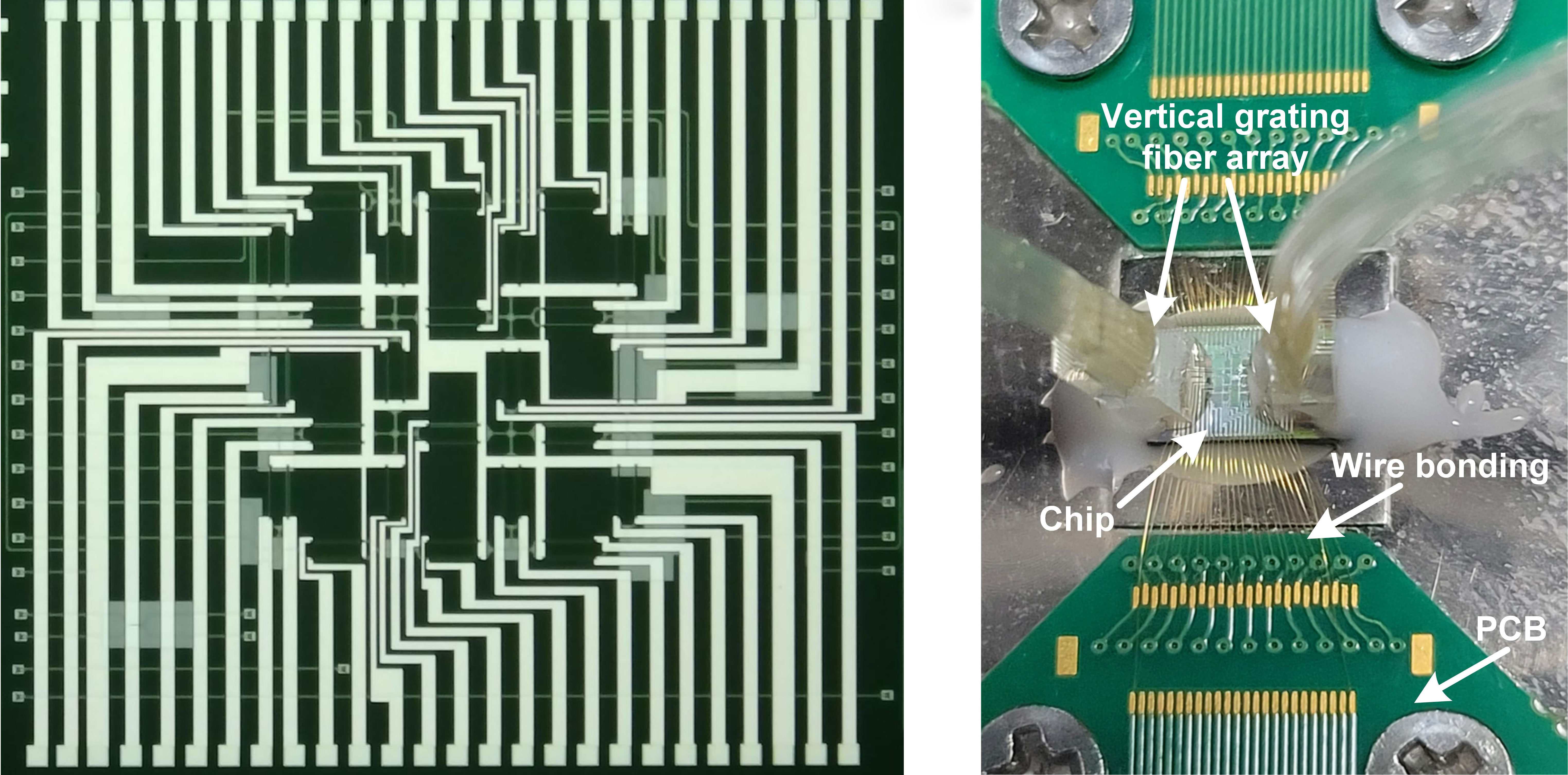An optical chip based on a quadrilateral network of Mach–Zehnder interferometers can be programmed to perform several different optical functions. [Image: Jianji Dong, Huazhong University of Science and Technology]
Researchers in China say they have built an optical chip that can easily be programmed to perform several different tasks, including the matrix computations that are needed to create optical neural networks (Opt. Mater. Express, doi: 10.1364/OME.499408). The chip automatically configures itself to deliver the desired optical function, avoiding the need for any manual adjustments to the device structure.
Mach–Zehnder interferometers
Programmable photonic circuits built on networks of waveguide-based components have emerged in recent years, but they typically require some manual configuration—which in turn demands detailed knowledge of the circuit design. “Our new chip can be treated as a black box, meaning that users don't need to understand its internal structure to change its function,” explained team leader Jianji Dong, Huazhong University of Science and Technology. “The user only needs to set a training objective for the chip and, with computer control, the chip will self-configure to achieve the desired functionality.”
The device exploits a network of Mach–Zehnder interferometers arranged in a quadrilateral pattern, a topology that has been widely used to create optical neural networks. Unlike previous iterations, however, this new chip can be programmed to complete tasks that include optical routing, low-loss optical power splitting and the matrix computations used to train neural networks.
Self-configuring chip
The chip is reconfigured by adjusting the voltages of electrodes that are connected to optical switches, allowing different light propagation paths to be created within the quadrilateral network. After each training run, a computer program analyzes the input and output data to assess the accuracy of the network, and the voltages of all the electrodes are then adjusted at the same time to speed up the training process.
The researchers showed that when the chip was used for matrix computations, the final output almost matched the target matrices.
The researchers showed that when the chip was used for matrix computations, the final output almost matched the target matrices. Optical routing—itself a specialized type of matrix operation—was also demonstrated with a high extinction ratio, while tests of optical power splitting showed that the energy loss always remained below 1.16 dB.
The researchers now plan to build larger scale photonic networks that can be programmed to perform more complex matrix operations, as well as more diverse optical functions. “With additional development, it may become possible to achieve optical functions comparable to those of field-programmable gate arrays in electronics,” said Dong.

